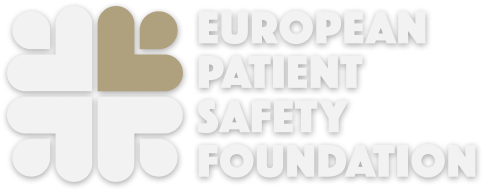
Dr. Irene Grossmann works at the Delft University of Technology (Netherlands), as assistant professor at the Centre for Safety in Healthcare at the Delft University of Technology. She is co-founder and co-lead of the Institute for Health Systems Science at the same university. Besides her academic work she holds a clinical position as a surgeon, previously working as a surgical oncologist and on the intensive care, currently working part-time at the Emergency Care Department.
Why does patient safety matter to you?
For me, patient safety is an integral part of my professional responsibility. During my career, both in research and in clinical practice, I have encountered several situations that have left me wondering whether we do the right things and do things right. These situations made me raise questions. For example, I designed and collected data in a prospective database of colorectal cancer patients. As we needed an unselected cohort, we included all patients within a specific time frame (2007-2011). My data turned out to be rather different from those in the literature, in terms of patient characteristics and outcomes. One of our observations was an unexpectedly high mortality of patients undergoing right hemicolectomy. When I raised this issue, I was met, next to recognition, also with resistance and denial. I was repeatedly told: “That doesn’t happen in our hospital”. Our local results were later found to be the same as the national results. So, why the resistance? For us it was just a sign that we needed to look at the causes, but that feeling was clearly not always shared.

Why are you focusing, in your work, on the question of the implementation?
Because there is a huge gap between the knowledge and know-how already available, and what is known and applied in the medical domain. When I started in my position at the TU Delft two years ago, I obviously had some ideas, since I had applied for the position, but honestly, I had no clue yet how extensive the knowledge in safety sciences was. It just does not reach healthcare somehow. After a year or so, I also realised that there is no need to develop anything new in the areas of change management, quality improvement strategies or the creation of learning organisations, as it is already all there. Instead, we need an idea how to propel this knowledge into the health and care sector. I chose to focus on what medical professionals need to embrace knowledge that they are mostly unfamiliar with, such as engineering – and systems science.
How can we achieve results in terms of patient safety, especially in times of crisis?
Well, our vision is that especially in times of crisis safety should be addressed. Safety is an outcome of well-functioning systems; the better the systems function, the lower the waste and the higher the quality and safety. This is not just a theory; it has been proven in other domains and it is a key statement from both the OECD and the WHO. It requires leadership and, in my professional opinion, a systems perspective to understand the mechanisms of failure and the changes that are needed to address these. Quality improvement also is a continuous and never-ending process. Projects on safety in healthcare are often not imbedded in the organisation but merely temporary add-ons. To achieve sustained safety improvements, safety must be part of the daily routine, infrastructure and, ultimately, workplace culture. This can be done, but it must be a priority. Safety is not just a task for individual healthcare professionals to signal and resolve; for a large part, safety can be organised. This means that the leadership must take responsibility for doing precisely that.
Dr. Irene Grossmann
TU Delft Centre for Safety in Healthcare (The Netherlands)
CHALLENGES OF IMPLEMENTATION
Tools and recommendations for implementing patient safety practices
